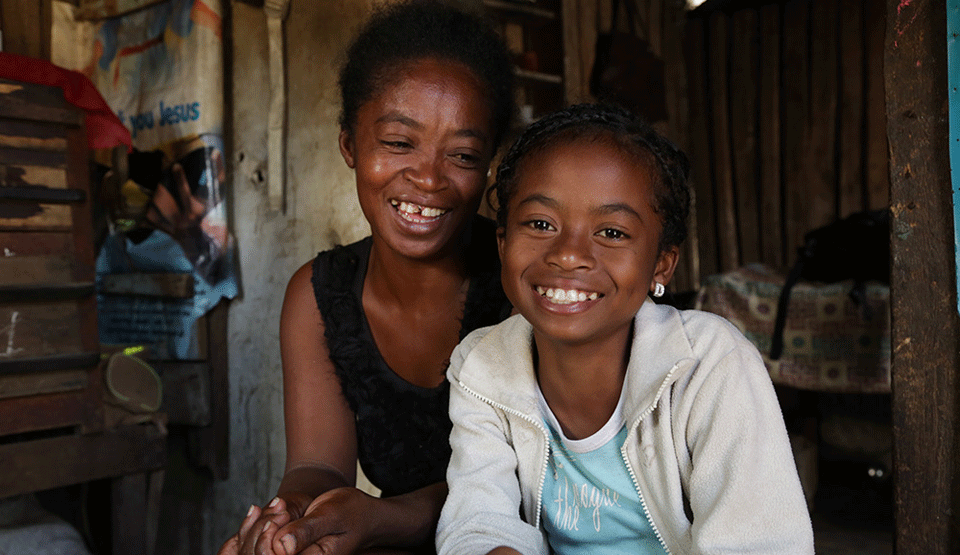
When thinking of the island country of Madagascar many people, particularly in the United States, are reminded of the Dreamworks kids film of the same name. In that movie, great music is played and the only trouble on the beautiful island is that of the mischievous talking animals. The reality of Madagascar is a very different picture. The country of 30 million people is considered one of the poorest on the planet. In some parts of the land, 90% of the residents live on less than two dollars a day.
The documentary Madagasikara: The Real Madagascar aims to dispel the myths. It shines a cold and unforgiving light on how capitalist corruption and lack of international solidarity plunged a country into despair.
Directed and produced by former attorney-turned-documentarian Cam Cowan, Madagasikara details a four-year journey, starting in 2014, that focuses on three women in Madagascar attempting to provide for their families in the midst of poverty and civil unrest. The documentary connects the lives of Lin, Deborah, and Tina to the overall history of the country and the problems the entire island faces.
The film is intense, engrossing, and at times uncomfortable. It dares the viewer to get to know Lin, Deborah, and Tina– all young women under the age of 45– as they deal with everyday struggles. They are working women and mothers, forced into hardship in order to provide for their children and themselves.
This is one of the strongest elements of Madagasikara. Oftentimes, in a world filled with constant tragedies and fast moving news cycles, viewers can become desensitized to the human victims. We can hear about poverty and death but we can also disassociate if we do not feel connected. Lin, Deborah, and Tina provide that connection and the heart of this documentary.
Lin is a young mother who does laundry in order to provide for her children, in particular her often sick daughter Anna. There are times she has to choose between food for the week (two cups of rice for her entire family) or getting medicine for her daughter. Lin is angry at times because of her situation, and we bear witness to her frustrations.
Deborah, 18 years old, is the youngest of the three women. At the age of 12, Deborah entered into sex work and was trafficked as a child, in order to help cover the rent for her and her mother. She was rescued by an organization that worked with young people to get them off the streets and into school. Yet, due to restrictions imposed by the United States in 2009 on Madagascar, Deborah lost that support when the organization lost its major source of funding.
Deborah is a young woman with dreams to become a lawyer one day. Her spirit shines through in her interviews along with her sorrow.
Tina works in the quarry, a large pit where she extracts stones with her family. She’s worked in the quarry alongside her parents since she was 12 years old, doing hard labor. Now, at the age of 32, she works in order to keep her three children in school. Tina often pushes through health scares in order to work long hours in order to pay for her children’s education, wanting to provide a different future for them than the present she currently lives.
When it comes to poverty, those often hit the hardest are women and children. This is no different than in the United States where women are often the face of low wages and financial hardship. There’s an even stronger connection in that regard, as the majority of the people of Madagascar are non-white. The film supplies another piece of evidence that the face of poverty, as is the case in many places across the globe ravished by greed, are Black, brown, and women.
The film provides a detailed timeline of the island’s descent into poverty and unrest. This is important. By painting this picture it shows that the stories of Lin, Tina, and Deborah are not anomalies, but the status quo. Madagascar didn’t end up the way it is due to a few bad apples in leadership, but because of systemic exploitation.

It’s pointed out by one interviewee in the film that when Madagascar got its independence from France in 1970 about 30% of the population were poor. Forty years later and that percentage has risen to 80. How did it get this way? What occurred?
Madagasikara attempts to answer those questions by providing facts and commentary from experts in the fields of economics and government. The picture is bleak and damning towards leadership in various nations.
The first being Madagascar, as uprisings against the corrupt billionaire president Marc Ravalomanana caused unrest. Second is that of the international community that seemingly turned a blind eye to the perils of the people there. Third, and perhaps the one that dealt the most striking blow, is the United States.
In 2009, the U.S. government withdrew from the African Growth and Opportunity Act (AGOA) with Madagascar. This would be devastating for many of the people there who depended on jobs and funding through trade and investment AGOA provided.
By establishing these details the documentary turns the viewer from passive watcher to participant in the struggles they see on the screen. It can be uncomfortable, especially with the often rose-colored narrative of the Obama administration that exists, at times, in the media.
It reminds us again that it’s not about personalities, but about the nature of the beast that is imperialism. It cares not about the human lives sacrificed for the expansion of power.
One aspect that could have been further explored was the activism happening in Madagascar to combat poverty. We get a glimpse of some personalities providing assistance to people, such as Father Pedro Opeka and his organization MadaKids.org, but not much regarding the people who may be organizing protests in the streets. We get graphic footage of protesters being assaulted by law enforcement, but no interviews with those who decided to march.
Madagasikara should be required viewing for a lesson on just how connected all of us are. Of the 30 million people in Madagascar, half of them are children, many who suffer from chronic malnutrition. The film puts those innocent faces front and center throughout, letting the viewer know that we’re not only fighting for the present but the future as well.
The trailer for Madagasikara can be found here. The digital premiere of the film is June 26, 2020.












Comments